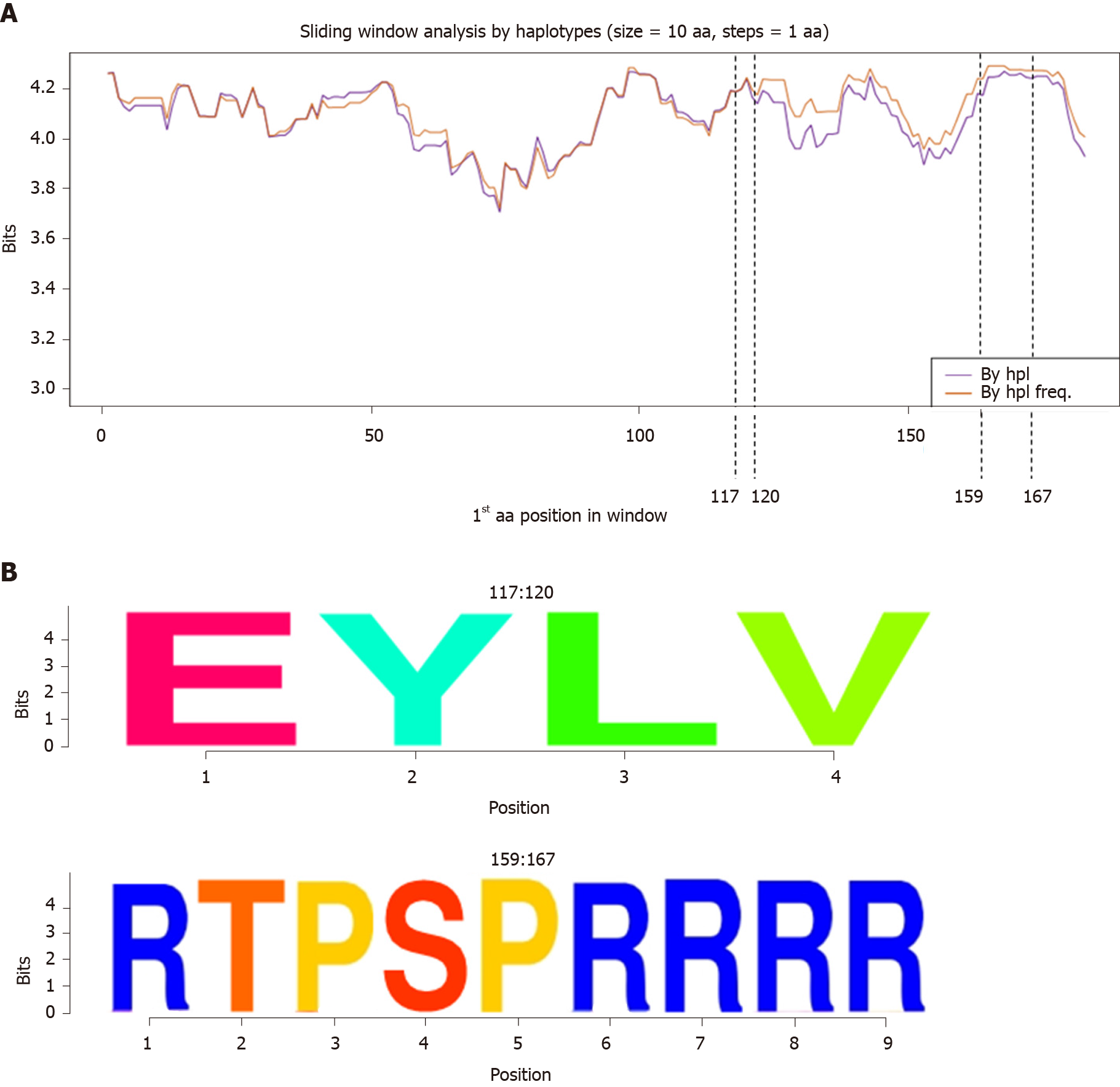Copyright
©The Author(s) 2020.
World J Gastroenterol. May 28, 2020; 26(20): 2584-2598
Published online May 28, 2020. doi: 10.3748/wjg.v26.i20.2584
Published online May 28, 2020. doi: 10.3748/wjg.v26.i20.2584
Figure 4 Information content analysis at amino acid level.
A: Sliding window analysis of the Hepatitis B core protein sequence for all 38 patients with and without consideration of relative frequency. Each point on the graph is the result of the mean information content (in bits) of the 10-amino acid in size windows, with forward displacement between them of 1 amino acid step. The purple line represents the information content of all the quasispecies haplotypes (By hpl) whereas the orange line indicates the information content considering haplotype frequency (By hpl freq). The dashed lines show the 2 common amino acid hyper-conserved regions observed, with reporting of their positions. B: Representation of amino acid hyper-conserved regions detected as sequence logos (with reporting of amino acid positions). The relative sizes of the letters in each stack indicate their relative frequencies at each position within the multiple alignments of amino acid haplotypes. The total height of each stack depicts the information content of each amino acid position, measured in bits (Y-axis); range: 0 bits (0% conservation) to 4.32 bits (100% conservation). By hpl: Analysis by haplotype; By hpl freq: Analysis by haplotype frequency; aa: Amino acid.
- Citation: Yll M, Cortese MF, Guerrero-Murillo M, Orriols G, Gregori J, Casillas R, González C, Sopena S, Godoy C, Vila M, Tabernero D, Quer J, Rando A, Lopez-Martinez R, Esteban R, Riveiro-Barciela M, Buti M, Rodríguez-Frías F. Conservation and variability of hepatitis B core at different chronic hepatitis stages. World J Gastroenterol 2020; 26(20): 2584-2598
- URL: https://www.wjgnet.com/1007-9327/full/v26/i20/2584.htm
- DOI: https://dx.doi.org/10.3748/wjg.v26.i20.2584









